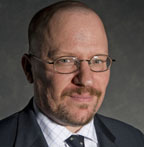Ohio won $400 million in the second round of the U.S. Department of Education’s $4.35 billion Race to the Top grant competition, but at least 50 school districts and independent charter schools have decided to opt out of the program, saying the red tape and compliance costs would exceed any benefit from the one-time federal money.
Ohio was among eight states and the District of Columbia awarded funding in August as part of the second and final round of the competition. States were required to submit “scope-of-work” plans to federal officials in November detailing how they would spend the money.
The funds, which would be distributed over four years, will be available to states once their plans are approved. Larger urban school districts are eligible for millions of dollars. Cleveland’s $29 million share is reportedly the largest in the state.
‘No Great Concern’
Although at least 28 medium-sized and small districts and charter schools decided to forego the funds, the majority of Ohio’s schools have sought some grant money. About 324 districts and 213 charters are applying for a portion of the $400 million, said Stephanie Klupinski, vice president of government and policy affairs at the Ohio Alliance for Public Charter Schools.
Klupinski says there is “no great concern” among her members about flexibility and independence because “independence can be exhibited in their scopes of work. And who doesn’t want to increase graduation rates, close graduation and performance gaps, have comprehensive evaluation systems, and promote effective teachers?
“All of their scopes of work will focus on graduation rates, performance gaps, and teacher quality,” Klupinski added. “Many will be especially interested in formative testing programs tied to the planned new responsive data systems. But we won’t know until the scopes-of-work are . . . approved.”
‘Hardly Worth the Paperwork’
The greater concern among her organization’s members, Klupinski explained, is the amount of money awarded.
“The guaranteed minimum grant to charters is $25,000,” she said. “For many, that’s hardly worth the bureaucratic paperwork.”
Terry Ryan, vice president for Ohio programs and policy at the Thomas B. Fordham Institute, agreed with Klupinski’s assessment.
Fordham oversees several small charter schools in Ohio. Ryan cited the Columbus Collegiate Academy, which has about 150 students.
“They did the cost-benefit analysis, and figured out they weren’t going to get enough to justify the time. The compliance costs alone would be more trouble than the grants would be worth,” he said.
‘Modest Reform’
Ryan says he is generally excited about the reforms Race to the Top inspired. In particular, he points to Ohio’s plan to implement a statewide computer system to collect and analyze data on teacher effectiveness.
“That’s really important,” Ryan said. “The best indication we have of teacher quality is through value-added data analysis.”
But he is also critical of Ohio’s approach, which he said was not ambitious enough.
Under the program’s guidelines, states received more points if they obtained “statewide buy-in” from “stakeholders,” including district superintendents and, more controversially, teachers unions.
“Ohio went for modest reform and maximum buy-in,” Ryan explained. “They decided to spread money around like peanut butter.”
“That was a mistake,” Ryan added. “Better to go for big state reforms, in return for buy in.”
Kasich vs. Strickland
After the midterm election in November and in the weeks leading up to the deadline for Ohio’s “scope-of-work” plan, education officials debated whether Gov.-elect John Kasich (R) would jeopardize the state’s Race to the Top funding.
Outgoing Gov. Ted Strickland (D) went so far as to call U.S. Education Secretary Arne Duncan, urging him to pressure Kasich to keep Strickland’s “evidence-based” school-funding proposal intact, saying it was “a vital part” of Ohio’s RTTT application.
Ryan says he doesn’t buy Strickland’s plea. “This notion that [Strickland’s] evidence-based model was pivotal for the state winning the $400 million isn’t really true. Look at the application. It’s mostly about turnaround models, expanding charters, and the like.”
Ryan says Kasich’s plan, which emphasizes teacher quality, more charter schools, and greater school choice, is stronger than what Strickland offered.
Kasich’s education platform “is more in line with the boldness promoted by Race to the Top,” Ryan said.
Ben Boychuk ([email protected]) is managing editor of School Reform News.




